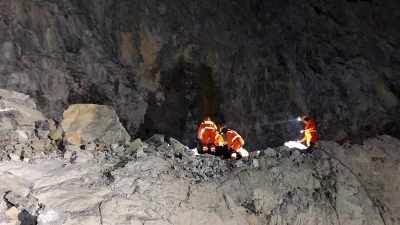They gift greenery back to mining sites
The word mining usually conjures up images of dusty,derelict sites with no greenery or wildlife around but three conservation biologists with a vision are bringing flora and fauna back to mining sites in Kolhapur and Sindhudurg in Maharashtra.
The word mining usually conjures up images of dusty,derelict sites with no greenery or wildlife around but three conservation biologists with a vision are bringing flora and fauna back to mining sites in Kolhapur and Sindhudurg in Maharashtra.
Kaustubh Moghe,Jayant Kulkarni and Vivek Gour-Broome comprise environmental consultancy firm Envirosearch that was born during a discussion five years ago on how mines rob the surrounding areas of flora and fauna. They discussed how some simple actions can rehabilitate ,the ecosystem and soon,they were approached by Hindalco Industries Ltd to translate their idea into action.
Since then,they have been working on the companys captive mines in Kolhapur and Sindhudurg. They have also been offering consultation to firms in Goa and even the Sultanate of Oman. Companies now realize the importance of good mining practices and how important it is to restore mining areas to their former balance with nature. All mining projects now have to carry out reclamation projects as part of the industry practices, says Moghe.
In a presentation at Grubshup on Law College Road on Sunday,Moghe and Kulkarni will discuss their work at mining sites.
We will discuss how we go about it. We will explain why it is important. The process begins with a visit to survey the surroundings to see local species and study the ecosystem and sub-systems. Then we try to propagate native plants and re-introduce species the area has lost. The rest follows as nature usually rights the balance in the end,with a little help, says Kulkarni.
The group collects seeds and seedlings throughout the year from various regions and grow them in their nursery so the plants can later be used in their projects.
According to Moghe,other reclamation projects also introduce plants at mining sites but unless local and indigenous species are planted these exercises are usually not sustainable. Of course it helps if you plant trees. But unless you plant the right trees,the ecosystem cant return to its original form, he says.
Explaining,Moghe says,if Australian Acacia are planted in an ecosystem with Malabar Giant squirrels,the effect is green,lush and beautiful but Giant Squirrels cannot thrive there because they need Ficus or other large,fruit-bearing trees. A project that analyses all these factors may sometimes cost several times,almost four to five times,more than plantation,says Moghe. He adds,With proper analysis of the ecosystem,the effects are sustainable and no after-care is required. This gives the greatest environmental benefit in the long run.
(Kaustubh Moghe and Jayant Kulkarni are scheduled to discuss their work at Grubshup from 10am to 12noon on Sunday)







